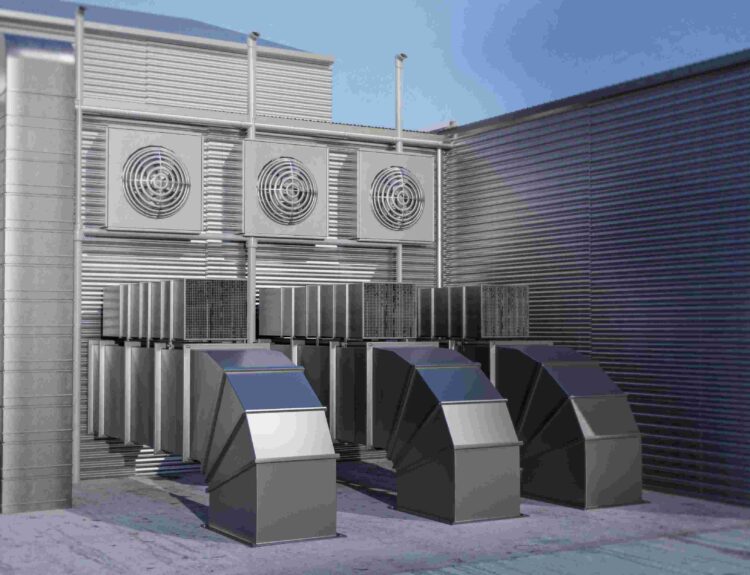Introduction
In today’s world, sustainable home improvement is more important than ever. Not only does it help reduce our environmental impact, but it can also save money in the long run. By focusing on eco-friendly projects, homeowners can create a more sustainable living environment that benefits both the planet and their wallets.
Eco-friendly projects offer a multitude of benefits, including lower energy bills, reduced water usage, and improved indoor air quality. These projects can range from simple DIY tasks to larger investments in renewable energy. This article will guide you through various sustainable home improvement projects, helping you prioritize and implement changes that make a real difference.
Assess Your Home’s Sustainability
Before diving into projects, it’s crucial to assess your home’s current sustainability. Start by evaluating your energy efficiency, water usage, and waste management practices. Look at your insulation, appliances, and landscaping to identify areas needing improvement.
- Energy Efficiency: Check your home’s insulation, windows, and doors for air leaks. Evaluate the efficiency of your HVAC system and appliances.
- Water Usage: Review your water bill and inspect your plumbing for leaks. Assess the efficiency of your fixtures and irrigation systems.
- Waste Management: Consider your recycling practices and waste disposal methods. Look for ways to reduce, reuse, and recycle more effectively.
Identifying these areas will help you target the most impactful sustainable home improvement projects.
Prioritize Your Projects
Once you’ve assessed your home’s sustainability, it’s time to prioritize your projects. Focus on those that will have the biggest impact on both your sustainability and budget.
- Cost: Determine the initial investment and potential savings of each project.
- Time: Consider how long each project will take to complete.
- Skill Level: Assess whether you can do the project yourself or need professional help.
By carefully prioritizing, you can tackle the most critical sustainable home improvement projects first, ensuring the best return on investment.
Energy-Efficient Upgrades
Reducing energy consumption is a cornerstone of sustainable home improvement. Here are some tips for making your home more energy-efficient:
- Appliances: Upgrade to energy-efficient appliances that use less electricity and water.
- Lighting: Replace incandescent bulbs with LED lights, which use up to 75% less energy.
- HVAC Systems: Consider upgrading to a high-efficiency HVAC system and regularly maintain it.
DIY Projects:
- Programmable Thermostats: Install programmable thermostats to better control your home’s temperature.
- Sealing Air Leaks: Use caulk or weatherstripping to seal gaps around windows and doors, preventing heat loss.
Water Conservation Measures
Water conservation is another vital aspect of sustainable home improvement. Reducing water waste helps conserve a precious resource and lowers your water bill.
- Low-Flow Fixtures: Install low-flow showerheads, faucets, and toilets to reduce water usage.
- Rainwater Harvesting: Set up a rainwater harvesting system to collect and reuse rainwater for irrigation.
- Greywater Systems: Implement a greywater system to recycle water from sinks and showers for use in your garden.
DIY Projects:
- Rain Garden: Build a rain garden to absorb and filter rainwater runoff.
- Drip Irrigation: Create a drip irrigation system to water your plants more efficiently.
Sustainable Landscaping
Eco-friendly landscaping can significantly reduce your home’s environmental impact. Sustainable landscaping practices save water, promote biodiversity, and reduce maintenance.
- Drought-Resistant Plants: Choose plants that require less water and are suited to your local climate.
- Pollinator-Friendly Gardens: Create gardens that attract and support pollinators like bees and butterflies.
- Xeriscaping: Implement xeriscaping techniques to design a landscape that requires minimal irrigation.
DIY Projects:
- Compost Bin: Build a compost bin to recycle kitchen and garden waste into nutrient-rich soil.
- Rain Garden: Create a rain garden to manage stormwater runoff and enhance your landscape.
Renewable Energy Generation
Generating renewable energy is a powerful way to make your home more sustainable. Solar, wind, and geothermal energy systems can significantly reduce your reliance on non-renewable energy sources.
- Solar Panels: Install solar panels to harness the power of the sun and reduce your electricity bills.
- Wind Turbines: Consider a small wind turbine if you live in an area with sufficient wind resources.
- Geothermal Systems: Explore geothermal heating and cooling systems for a more sustainable climate control solution.
Financial Incentives:
- Tax Credits: Take advantage of federal and state tax credits for installing renewable energy systems.
- Rebates: Look for local utility rebates that can offset the cost of your investment.
Recycled and Repurposed Materials
Using recycled and repurposed materials in your home improvement projects is a great way to promote sustainability. It reduces waste and gives new life to old materials.
- Recycled Materials: Use recycled glass, metal, and plastic in your projects.
- Repurposed Items: Repurpose old furniture, doors, and windows in new and creative ways.
- Reclaimed Wood: Incorporate reclaimed wood for flooring, furniture, and decorative elements.
DIY Projects:
- Furniture from Pallets: Create unique furniture pieces using reclaimed pallets.
- Reclaimed Wood Flooring: Install flooring made from reclaimed wood for a rustic and eco-friendly look.
Indoor Air Quality Improvements
Maintaining good indoor air quality is essential for health and well-being. Sustainable home improvement projects can help you achieve this.
- Low-VOC Paints: Use low-VOC (volatile organic compound) paints to reduce harmful emissions.
- Air Purifiers: Install air purifiers to remove pollutants and allergens from the air.
- Natural Ventilation: Implement natural ventilation strategies to improve air circulation.
DIY Projects:
- Living Wall: Create a living wall with plants to naturally purify the air.
- Natural Cleaning Products: Use homemade or eco-friendly cleaning products to reduce indoor pollutants.
Maintenance and Upkeep
Regular maintenance is key to ensuring the longevity and efficiency of your sustainable home improvement projects. Keep your home in top shape with these tips:
- Cleaning Air Filters: Regularly clean or replace air filters in your HVAC system.
- Inspecting Insulation: Check insulation for damage or wear and replace it as needed.
- Maintaining Solar Panels: Clean your solar panels periodically to ensure maximum efficiency.
DIY Maintenance Projects:
- Home Energy Audit: Perform a home energy audit to identify areas for improvement.
- Inspect Seals and Gaps: Regularly inspect and seal gaps around windows and doors to prevent energy loss.
Financing Sustainable Home Improvements
Financing your sustainable home improvement projects can be made easier with various options available. Here are some ways to fund your eco-friendly projects:
- Tax Credits and Rebates: Explore federal, state, and local incentives for sustainable home improvements.
- Green Loans: Consider green loans specifically designed for energy-efficient upgrades.
- Home Equity Loans: Use home equity loans to finance larger projects with potentially lower interest rates.
Crowdfunding Platforms:
- Explore crowdfunding platforms that allow you to raise funds for your sustainable home improvement projects.
Conclusion
In conclusion, sustainable home improvement is a powerful way to reduce your environmental impact and save money. By prioritizing energy-efficient upgrades, water conservation measures, sustainable landscaping, renewable energy generation, and using recycled materials, you can make significant strides toward a more eco-friendly home. Regular maintenance and smart financing options further enhance the benefits of your projects.
Embrace eco-friendly projects and take steps toward creating a more sustainable home today. For more inspiration and guidance on sustainable home improvement projects, explore the resources provided and start making a difference.
By following these tips and projects, you can create a more sustainable living environment that benefits both your family and the planet. Happy home improving!








